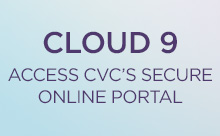Finding Support for Chronic Health through Social Media
 In today’s world, the ever-increasing need for technology and immediate information has dramatically changed the landscape of managing one’s health. In a report published in January 2013 by the Pew Internet & American Life Project, 72 percent of American Internet users have gone online to look for some kind of health information in the past year. The report also found that women are more likely than men to head to cyberspace to investigate potential health issues.
In today’s world, the ever-increasing need for technology and immediate information has dramatically changed the landscape of managing one’s health. In a report published in January 2013 by the Pew Internet & American Life Project, 72 percent of American Internet users have gone online to look for some kind of health information in the past year. The report also found that women are more likely than men to head to cyberspace to investigate potential health issues.
Frequently, people start looking for more information with a search through Google, Bing or Wikipedia. Beyond searching for a diagnosis or information about a specific disease, people also have turned to the Web for support. Niche communities that focus on an array of health issues, such as HealthCentral, Patients Like Me, Inspire or Treatment Diaries, invite individuals to share their personal stories about living with chronic illnesses. For many, social media, especially places like Facebook, have turned into a place for support and comfort. The web offers a virtual support system for many people, battling both common and rare conditions.
Scleroderma is a relatively unknown disease that affects approximately 300,000 Americans. Most general practitioners will never see a patient affected by the disease. The same is true in far too many instances of people living with scleroderma. In my role at the Scleroderma Foundation, I increase connections of people living with the disease and help them better access the essential resources they need so they can be a more involved member of their care team. In two years, our Facebook community has tripled in size to more than 10,750 users – the largest and most active of its kind among similar scleroderma organizations. In addition, many of our 24 chapters and 150 support groups across the country manage their own social networking communities, further engaging the scleroderma community.
I attribute the Scleroderma Foundation’s online successes to several factors. First, patients are becoming more active participants in their treatment plans, and secondly, online tools like Facebook offer an improved access to health information.
“I initially reached out to online resources when I recognized that no one in my world ‘got it,’” said Teri H., a registered nurse from Texas who has lupus and scleroderma. Teri said she joined our social community because, “I have felt I was in desperate situations with these illnesses in the last couple of years and I found great comfort in being able to read others’ posts as well as be able to share on different websites.”
There are many instances where people are unable to attend a support group in their own town. A disease like scleroderma can limit one’s mobility. The psychological effects of the disease also make it hard for some to go out in public. A virtual support group offers a unique opportunity to connect with others in an intimate and personal manner.
“Social media is like a huge support group. You may not have the intimacy of being in a small group but… I have actually become friends with people who have scleroderma and are from other countries,” said Helene G., who runs a scleroderma support group in San Diego and belongs to the Foundation’s Facebook community.
When Lora K. was first diagnosed with scleroderma, she and her husband initially turned to medical professionals for support. She was surprised at what happened.
“To our shock and grave disappointment, we discovered they offered no help,” Lora said. “To our continued amazement, they offered no information. Not even a suggestion as to where we might find information,” she said. “We had no choice but to seek help and information on our own.”
Teri, Helene and Lora’s stories are just the beginning of how some people living with scleroderma – along with their caregivers, friends and family members – have gone online to empower themselves with information.
In May 2009, we began a partnership with Inspire. With their help, our global online discussion board has grown from 2,300 users in 2010, to more than 6,700 users in 2012. Last year, there were 2,877 discussions started with nearly 30,000 replies from discussion board members.
Working closely with our Programs and Services team, we review journal entries and discussion posts. The message board’s posts help us generate content for our publications and our annual patient education conference. It steers us toward what issues people are currently experiencing and ensures that we have a pulse on common concerns.
In the coming years, the trend of people turning to the web for health information will continue to grow. As access to mobile devices becomes easier and less cost-prohibitive, online communities will see membership numbers surge. I predict that more medical professionals will take part in online discussions as their comfort levels and confidence increase, as well. This will help change the dynamic in the benchside setting, causing doctors and patients to be engaged members in one’s care plan.
 Christina Relacion is the Communications Manager at the Scleroderma Foundation’s National Office, located in metro Boston. Her primary interests include website production and social media. Her work has been recognized by the Wisconsin Healthcare Public Relations and Marketing Society, the Association of Marketing and Communications Professionals and other professional organizations. Christina has presented across the country on topics including social media, public relations and website management.
Christina Relacion is the Communications Manager at the Scleroderma Foundation’s National Office, located in metro Boston. Her primary interests include website production and social media. Her work has been recognized by the Wisconsin Healthcare Public Relations and Marketing Society, the Association of Marketing and Communications Professionals and other professional organizations. Christina has presented across the country on topics including social media, public relations and website management.
Comments to our stories are welcomed, and are intended to offer a forum for engaging readers in the conversation. While we do not actively moderate comments, we do ask that they remain respectful and civil. Every person’s journey is unique, and each perspective is valuable to us. We will not approve comments that contain profanity, could be considered abusive, are threatening in nature, or otherwise violate the terms of our Privacy Policy. If you view a comment that seems to violate these terms, we encourage you to contact us and we will review it.











I have Scleroderma. First diagnosed with Raynauds in 1978. Early 80′s had a tip of my finger amputated at Brighman’s & Women’s . Dr. Peter Schur was my Dr.
I now live in NC. I go to Duke for my PHA and UNC for Barrett’s. I have to decide if I should undergo Nissen surgery. Any thoughts would be appreciated. Is there somewhere I should go for all of my Scleroderma problems. Thank you Sheila
Has Scleroderma with Pulmonary Hypertention.